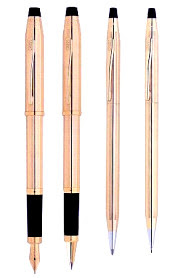Company: Tata Motors
Agency:FCB Ulka
Brand Count : 196
 Tata Indigo is the only truly indigenous presence. With the government exiting Maruti, Indigo and Indica represent the only domestic car manufacturers having their presence in the car market.
Tata Indigo is the only truly indigenous presence. With the government exiting Maruti, Indigo and Indica represent the only domestic car manufacturers having their presence in the car market.The C-segment is one of the fastest growing and most competitive segment . The brand competition include Accent,Sienna,Esteem, Ikon,Corsa and the like.
Indig
 o did not compare itself with the immediate competition but wanted to offer what the premium brands in the D segment offered. The car was known for the space and the accessories it offered as a part of the standard equipment was seen only in premium segment cars. Indigo (like Indica) came out with different variants at different price points. One variant even had DVD player and Screen attached to the seat -a feature that you see not even in luxury cars.All these at a very affordable price.
o did not compare itself with the immediate competition but wanted to offer what the premium brands in the D segment offered. The car was known for the space and the accessories it offered as a part of the standard equipment was seen only in premium segment cars. Indigo (like Indica) came out with different variants at different price points. One variant even had DVD player and Screen attached to the seat -a feature that you see not even in luxury cars.All these at a very affordable price.This campaigns and the reasonable performance of the car with the tempting price tag ensured the brand's success in the market. Indigo has now 33% market share in the c-segment.
In Jan
 uary 2007, Tata motors surprised everyone by launching India's first stretch limousine - the Indigo XL. Indigo XL marked the entry of Tata into the premium segment. Indigo XL has a longer wheel base that gives the rear passengers legroom comparable with the Limousines. Even the premium sedans in the E segment do not offer the leg space that XL offered. So Tata chose to call it a stretch Limousine. This straight comparison has irked some auto watchers who could not believe an Indian automaker calling their car a Limousine. XL has already created enough buzz in the market. Indigo XL as usual is positioned as a value for money car. The car offers comfort and accessories that is seen only in super luxury cars and comes with the price of a luxury sedan.
uary 2007, Tata motors surprised everyone by launching India's first stretch limousine - the Indigo XL. Indigo XL marked the entry of Tata into the premium segment. Indigo XL has a longer wheel base that gives the rear passengers legroom comparable with the Limousines. Even the premium sedans in the E segment do not offer the leg space that XL offered. So Tata chose to call it a stretch Limousine. This straight comparison has irked some auto watchers who could not believe an Indian automaker calling their car a Limousine. XL has already created enough buzz in the market. Indigo XL as usual is positioned as a value for money car. The car offers comfort and accessories that is seen only in super luxury cars and comes with the price of a luxury sedan.Indigo is another classic example of Masstige product and is a proof that we also can make world class product.
Source: businessline,agencyfaqs










